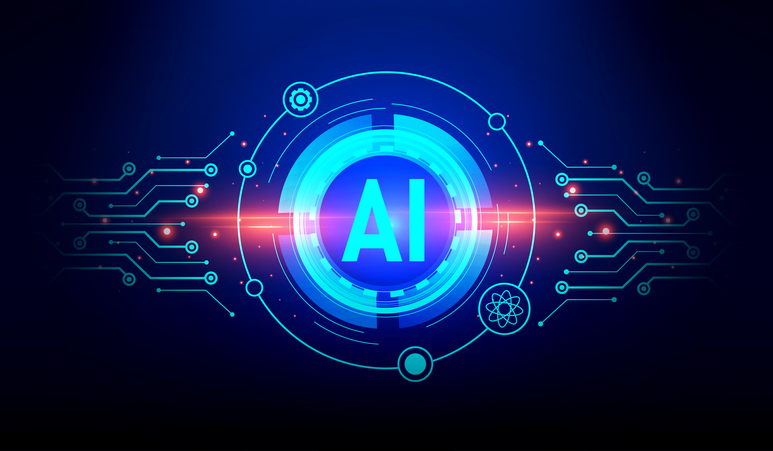Artificial Intelligence (AI) has moved from the realm of science fiction to a tangible reality, offering businesses unprecedented opportunities to innovate and improve efficiency. AI platforms provide the tools and frameworks necessary to develop AI solutions, even for those without deep expertise in data science. This guide will take you through the process of building your own AI solutions using an Artificial Intelligence platform.
- Understanding Artificial Intelligence Platforms
- Step 1: Define Your Objectives
- Step 2: Choose the Right Platform
- Step 3: Gather and Prepare Data
- Step 4: Select and Train Your Model
- Step 5: Evaluate and Fine-Tune Your Model
- Step 6: Deploy Your AI Solution
- Step 7: Monitor and Maintain Your AI Solution
- Conclusion
Understanding Artificial Intelligence Platforms
Before starting the step-by-step guide, it’s important to know what an AI-driven platform is. These platforms are tools that help build, train, and use AI models. They include the software and resources needed to make AI development easier. These platforms simplify complex tasks, so users can focus on creating and using AI applications without getting bogged down by technical details. They offer everything needed in one place, making AI development more accessible and efficient for everyone, regardless of their technical expertise.

Step 1: Define Your Objectives
The first step in building an AI solution is to clearly define your objectives. Identify the problem you are trying to solve and the goals you aim to achieve with AI. Clear objectives will guide your project and help you choose the right type of AI model. For example, you might want to improve customer service with a chatbot, make better decisions with predictive analytics, or automate repetitive tasks. Defining your goals from the start ensures your AI solution is focused and effective.
Step 2: Choose the Right Platform
Selecting the appropriate AI platform is crucial for the success of your project. There are several platforms available, each with its strengths and specializations. Some are known for robust machine learning and deep learning capabilities, while others offer a wide range of AI services, including natural language processing and computer vision. Some platforms specialize in language processing, data analysis, and AI-powered decision-making, while others provide a comprehensive suite of AI services and tools. Consider your specific needs, budget, and the level of support and resources each platform offers before making a decision.
Step 3: Gather and Prepare Data
Data is the backbone of any AI solution. The quality and quantity of your data will significantly impact your AI model’s performance. Start by gathering data relevant to your objectives from sources like databases, APIs, or even manual entry. Once you’ve gathered your data, the next step involves cleaning and preprocessing it. This involves:
- Removing duplicates and irrelevant information.
- Handling missing values.
- Normalizing or scaling data.
- Splitting data into training and testing sets.
Most AI-driven platforms offer tools to assist with data preparation, making this step more manageable. Proper data preparation ensures your AI model is accurate and reliable.
Step 4: Select and Train Your Model
With your data prepared, the next step is to select an appropriate AI model based on the type of problem you’re solving. For instance, classification tasks (e.g., spam detection) might use logistic regression, decision trees, or support vector machines; regression tasks (e.g., price prediction) could employ linear regression or neural networks; clustering tasks (e.g., customer segmentation) might use k-means or hierarchical clustering; and natural language processing tasks (e.g., sentiment analysis) often use recurrent neural networks (RNNs) or transformers. Once you’ve selected a model, you can begin the training process by feeding your training data into the model and adjusting its parameters to minimize errors. AI-driven platforms typically provide pre-built models and frameworks to streamline this process.
Step 5: Evaluate and Fine-Tune Your Model
Once your model is trained, it’s crucial to assess its performance using the separate testing data you reserved earlier. Key metrics for evaluation include accuracy, which measures how often predictions are correct; precision and recall, which gauge its ability to identify positives accurately; the F1 Score, a balance of precision and recall; and ROC-AUC, which evaluates its ability to distinguish between different categories. Depending on these metrics, adjustments such as fine-tuning hyperparameters, trying different algorithms, or incorporating more AI systems may be necessary to enhance your model’s performance and achieve your project objectives effectively.

Step 6: Deploy Your AI Solution
Once you’re satisfied with your model’s performance, deployment involves integrating it into a production environment for real-time predictions or decisions. Artificial Intelligence platforms offer deployment options such as hosting your model on scalable cloud infrastructure, running it on local devices for applications needing low-latency responses, or exposing it as an API for seamless integration with other software. Monitoring your deployed model is essential to maintain its performance and promptly implement updates as needed, ensuring it consistently meets operational needs.
Step 7: Monitor and Maintain Your AI Solution
Deploying your AI model marks an important milestone, but it’s just the beginning. Continuous monitoring and maintenance are essential to keep the model accurate and relevant. Monitor its performance over time and retrain it with new data as needed. Regular updates to your data and fine-tuning of the model are necessary to ensure it adapts to changing conditions and continues to perform optimally. This ongoing process helps maintain the effectiveness and reliability of your AI solution in the long term, ensuring it meets your evolving needs and delivers consistent results.
Conclusion
Building your own AI solutions using AI platforms can be a rewarding and transformative experience for your business. By following these steps—defining objectives, choosing the right platform, gathering and preparing data, selecting and training a model, evaluating and fine-tuning, deploying, and maintaining—you can develop AI solutions that drive innovation and efficiency. Embrace the power of AI with YOOV and take the first step towards transforming your business today.

Contact Us
Website:www.yoov.com
Email:hello@yoov.com
Whatsapp:Link
Read More
AI-Powered Personalization: Enhancing Customer Experiences
Impact of AI in Hong Kong Financial Sector: What You Need to Know
Automate Surveys And Reporting for Smarter Decisions: The Top AI in HK